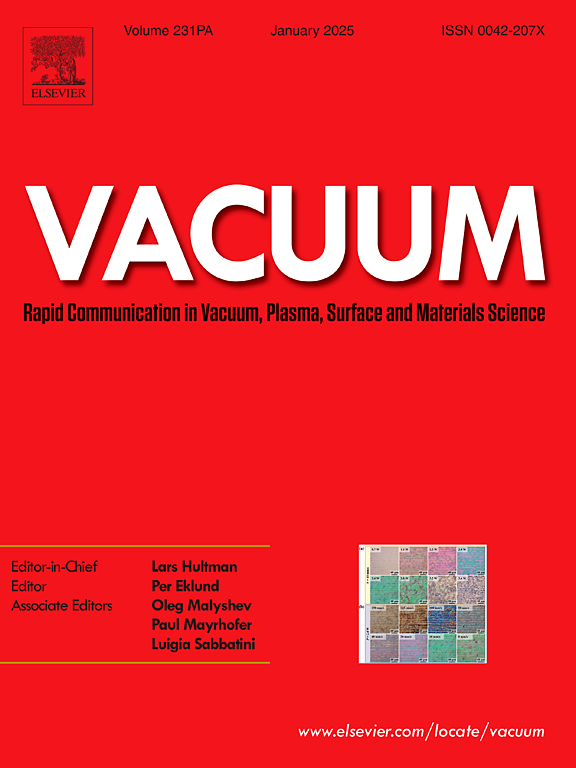Measurements of PSD and photoelectrons on NEG coated vacuum chambers exposed to synchrotron radiation at the Taiwan Light Source beamline
IF 3.8
2区 材料科学
Q2 MATERIALS SCIENCE, MULTIDISCIPLINARY
引用次数: 0
Abstract
A 1.5 GeV Taiwan Light Source (TLS) BL19B beamline was built to measure the photon stimulated desorption (PSD)-yield (ηPSD) and the associated photoelectron yield (PEY, ηe). Three stainless steel vacuum tubes 0.5 m in length were installed in the beamline for synchrotron radiation exposure. They were coated with non-evaporable getter (NEG) films with different structures, including conductive NEG (TiZrVAg) to reduce RF surface resistance, dual NEG (dense-TiZrV/columnar-TiZrV) for higher pumping performance, and triple-layer NEG (TiZrVN/dense-TiZrV/columnar-TiZrV) in which the nitride-layer (TiZrVN) acted as a hydrogen barrier in the chamber. Both ηPSD and ηe were measured simultaneously under two conditions, namely, “non-activated NEG”, baking only the tube at 80 °C without NEG-activation and “activated NEG” where the NEG was activated after at 180 °C. The intrinsic ηPSD comprises two parts, the ηc is measured via the throughput or conductance method for non-activated NEG, hydrocarbons, and noble gases with a sticking probability of α = 0; and the ηα for the activated NEG which absorbs the gases with α > 0. The results of PSD reveal a much lower intrinsic ηPSD for activated NEG than that of the non-activated NEG by a factor of 10–100 for most of the gases including H2, CO, CO2, CH4, H2O, and C2H6. The PEY (ηe) measurements for the NEG-tube showed higher values (>0.033 electrons/photon) for the non-activated NEG and lower values (<0.022 electrons/photon) for the activated NEG. Comparison showed that the triple-layer NEG tube possessed both the lowest ηPSD and ηe of all the NEG tubes. The ηe was also lower after activation of the conductive NEG tube. The simultaneous measurements of both ηPSD and ηe for the NEG-coated tubes at the beamline in this experiment are reproducible and practically convincing.
求助全文
约1分钟内获得全文
求助全文
来源期刊

Vacuum
工程技术-材料科学:综合
CiteScore
6.80
自引率
17.50%
发文量
0
审稿时长
34 days
期刊介绍:
Vacuum is an international rapid publications journal with a focus on short communication. All papers are peer-reviewed, with the review process for short communication geared towards very fast turnaround times. The journal also published full research papers, thematic issues and selected papers from leading conferences.
A report in Vacuum should represent a major advance in an area that involves a controlled environment at pressures of one atmosphere or below.
The scope of the journal includes:
1. Vacuum; original developments in vacuum pumping and instrumentation, vacuum measurement, vacuum gas dynamics, gas-surface interactions, surface treatment for UHV applications and low outgassing, vacuum melting, sintering, and vacuum metrology. Technology and solutions for large-scale facilities (e.g., particle accelerators and fusion devices). New instrumentation ( e.g., detectors and electron microscopes).
2. Plasma science; advances in PVD, CVD, plasma-assisted CVD, ion sources, deposition processes and analysis.
3. Surface science; surface engineering, surface chemistry, surface analysis, crystal growth, ion-surface interactions and etching, nanometer-scale processing, surface modification.
4. Materials science; novel functional or structural materials. Metals, ceramics, and polymers. Experiments, simulations, and modelling for understanding structure-property relationships. Thin films and coatings. Nanostructures and ion implantation.
 求助内容:
求助内容: 应助结果提醒方式:
应助结果提醒方式:


